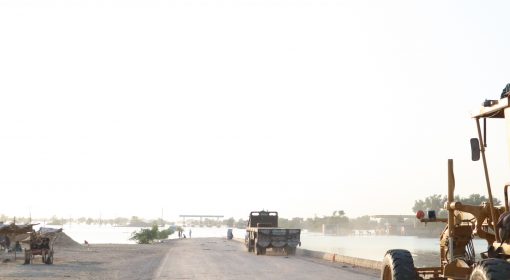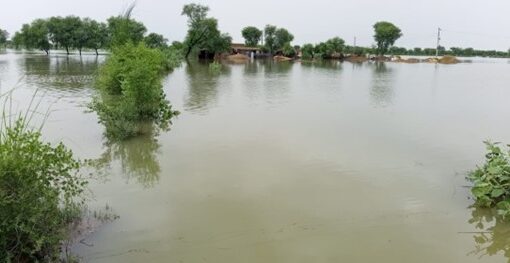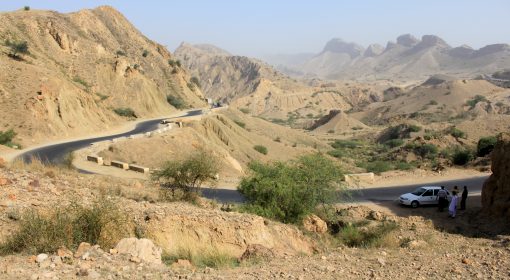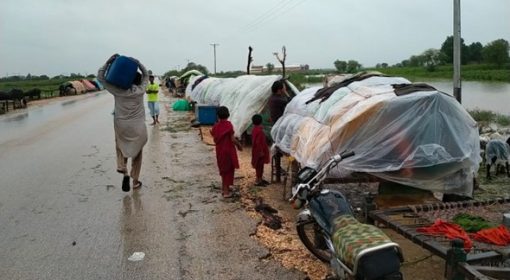By Allah Bakhsh, Project Coordinator FBLN / SPO Pakistan, with input from Reinier Veldman (Program Manager, MetaMeta)
Introduction
Roads are the vital lifeline to maintain the food supply lines from one place to another and from one city to another city and inter-provincial. Currently, there are two major departments in Pakistan at the country level that are looking after the road networks. The National Highway Authority (NHA) and the Provincial Bridges and Roads department. The National Highway Authority (NHA) is responsible to construct and main the long roads connecting the provincial and cities in the country and maintain the transport function. Each different section of these roads is defined by allocating them a sort of serial Number e.g. N-41 etc. to identify the section role and responsibility of the department while building and maintenance. The National Highway Authority looks for the main road and collects toll tax from the commuters. The second category, the rural roads within the provinces, are the responsibility of the Bridges and Roads Department (locally called B & R) who construct and maintain the link roads connecting the rural towns with the main road of the highway and nearest markets.
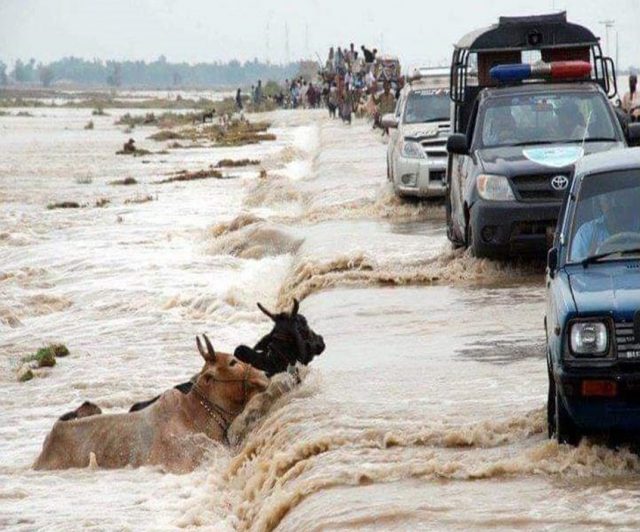
The roads, particularly wherever they are built are normally kept at the alleviated level in order to avoid damage from surface runoff from the seasonal rains. Culverts and bridges of various sizes are constructed on the (natural) water passage enabling the flood passages along the alignment. The flood passages vary in size. The long river passage is provided with heavy-duty bridges to the passing of the heavy transport during the flood to maintain the flow of traffic. It has been observed that the NHA bridges performed well due to the proper design and the highly technical nature of the bridges. During the recent flood of 2022, a number of heavy bridges along the National Highway washed away in Balochistan Province and traffic remained suspended for several weeks. The NHA, after the flood, has provided alternate passages in the river bed to allow the road transport to pass until the bridges are restored back. Restoration of heavy bridges is time taking task and these will likely not be restored within the next few years. Such places will remain at risk of flood and road disruption in case there are subsequent rains and floods. The risk of road suspension will remain in place. For example, the temporary causeway which is now built on the Bolan section of the Sibi-Jacobabad Highway, a National Highway (N-65), has been suspended a couple of times even after a small flood in the month of November this year since the causeway is built with dry stones reinforced by gabion and top filled by the sand and gravel. This structure does not sustain longer and washes away with the occurrence of every flood. This could be the case everywhere along the Highways in Balochistan Province until the permanent bridges are reconstructed.
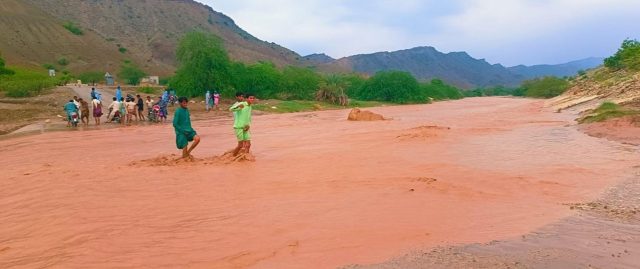
The Problem and Current Outlook
Contrary to the National highways, the provincial Bridges and Roads department constructs and maintains the short link roads which serves as Village to Market road and connect the rural villages with the nearest bigger market. There is no regular maintenance of these roads until they are re-paved or reconstructed. Seasonal rains make cuts on the earthen berms of these roads which are never rehabilitated by the department. Such cuts along the berms pose a risk of road accidents. On the other hand, these roads always pass either from mountainous ridges, small creeks or passes the plain lands. These link roads are also constructed at the height of the flood level and are provided with box-type bridges and culverts on the floodwater passages. Not only in Balochistan but elsewhere in Pakistan these bridges do not allow the passage of the high floods safely and as a result the flood over tops these roads and creates new gullies, cuts and washing away many bridges straightly. The backsides of the road are always eroded and many parts remain unsafe for road transport due to flood erosion. As a result, the traffic passes from the alternate dusty diversions. The blowing dust from the wheels enters in the respiratory systems and seriously affects the child and elderly health of the traveler and the households that live nearby.
The Way Forward
The National Highways and their road structures are comparatively better than the Provincial Road network. This blog provides guidance on the construction of link roads that are built, owned and operated under the supervision of Provincial Governments including Balochistan, with a focus on the river/stream crossings.
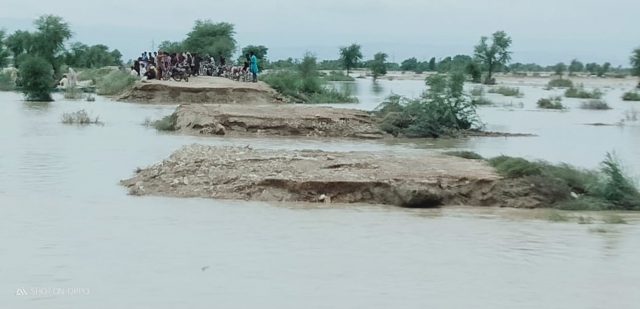
Balochistan can be categorized into two types of topographical landscapes for the construction of provincial road structures (i) uneven gravelly soils and hilly arid wastes and (ii) the plain and flat lands where normally these link roads are passing. Hills side roads are more sustainable due to the naturally compact and hard nature of the soil and defined water passage pass through the rocky beds. Once the road is built in such a zone it lasts longer in comparison to the roads builds in the plains that are formed by the sand and clay pruned to wash away with the heavy rain storms followed by the heavy floods. The construction quality of these link roads is also debatable which are built by recommendation of the local politician of the area. A road connecting more distant rural villages is never maintained by the line department and is bumpy and does not offer comfortable commutation.
The main concern of this blog is related to the safe flood water passages from the roads that are built in the plain and often pass from the irrigable area. The selection of the alignment of the road is more cumbersome when it connects the valleys which are flood irrigated. Farmers in such zones divert flood water for irrigation. When the floods are manageable they normally flow in the man-made flood irrigation canals and cross the roads at many locations through built culverts. The local provincial department perhaps has no estimation of exceptionally large floods and do not take these estimates into account or they save the funds and spend less on the size and width of the bridges and culverts that are built on the natural or artificial passage route of the flood. As a result, these bridges and culverts do not facilitate the passage of the bigger floods that raise to the road height and over the top of it, leading to damages to the bridges and surrounding areas.
Recommendation
This blog emphasizes and recommends the construction of causeways, or elevated roads, instead of bridges or culverts for flood water passages as they are low cost and last longer. The big floods in the plain are not common but when they occur they inundate and damage the road structure. The flood water generally passes in 24 hours’ time in most of the area specially the upsurge over flooded water so it will not suspend the road for a longer time and will not cause any damage to the road structures.
The size of the causeway structure may vary from place to place and the nature of the locations in ephemeral rivers that serves to the flood irrigation systems alongside the efficient road performance in dry conditions. The longer causeways can be built in the longer sections of the rivers at an appropriate locations. The causeway structure will serve as river bed stabilizer and protect the river bed degradation and banks erosion. With the occurrence of the floods, the upstream of the causeway will be filled up with sand and raise the river bed level and enable the farmers to divert water to their flood canals with less efforts. In another case this structure will also work as sand dam and slow down the movement of subsurface flows and recharge the upstream area on seasonal basis. The retained water in the upper area of the causeway can be utilized for the drinking and irrigation purposes as well.
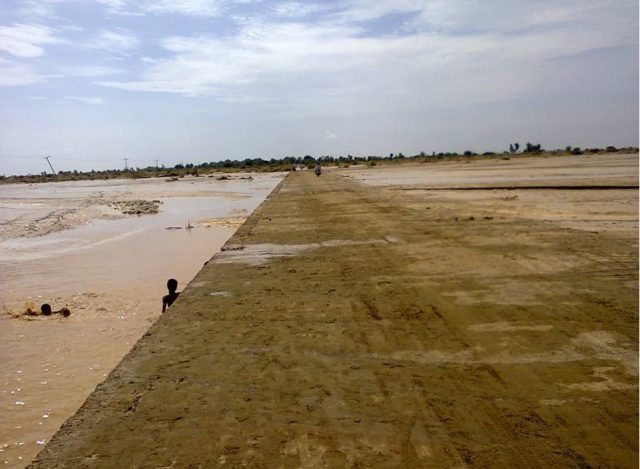
While making road based causeways from the irrigable plain land with short brick or stone made wall up to 2ft, it will retain moisture in the upstream lands that can be utilized for the seasonal crop cultivation. While floods pass from such a structure, the land owner of the lower area can convert the passage into the flood canals and water can be utilized for irrigation further downstream. There will be less road erosion and flood water will pass away without causing the damages to the road though the routine transport may be suspended for few hours, during the flood.
The construction of causeways are comparatively less costly than the construction of bridges and their maintenance is negligible.
To summarize, the construction of causeways comes with a number of benefits:
- They will allow the passage of major floods, without causing damage to the road infrastructure;
- There is less risk for the causeway to be a limiting factor to the flood volume that can pass the road crossing, as compared to a bridge.
- The causeway can act as a sand dam, especially in smaller valleys, where they contribute to the recharge of water to the subsurface;
- Also the causeway can have a positive effect as bed stabilizer, limiting the deepening of the streambed.
- The causeway can facilitate diversion structures, in the case of ephemeral streams allowing for the water to be transferred to fields for agricultural purposes.
- Lastly, the causeways can in most cases be built at a lower investment, both for the initial construction as well as for the ongoing maintenance, as compared to bridges.
